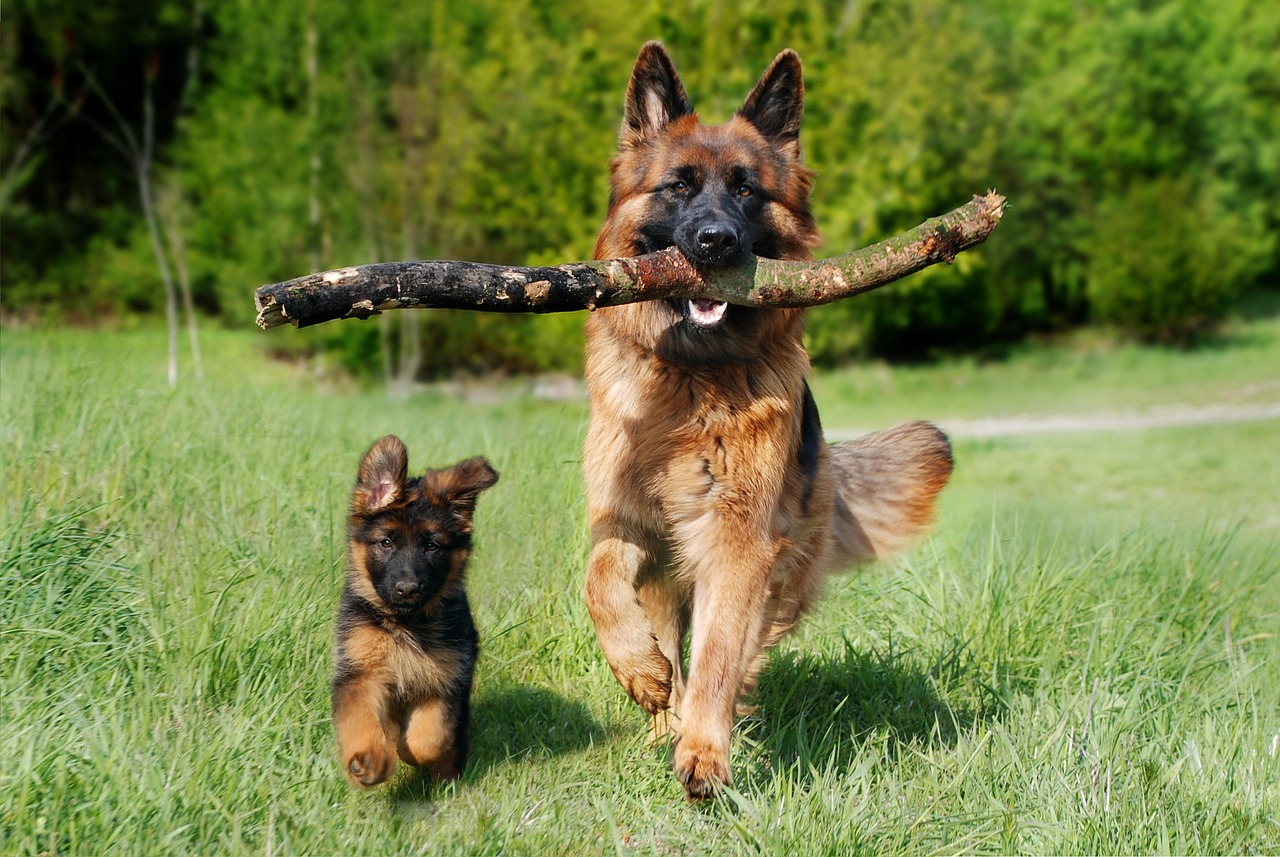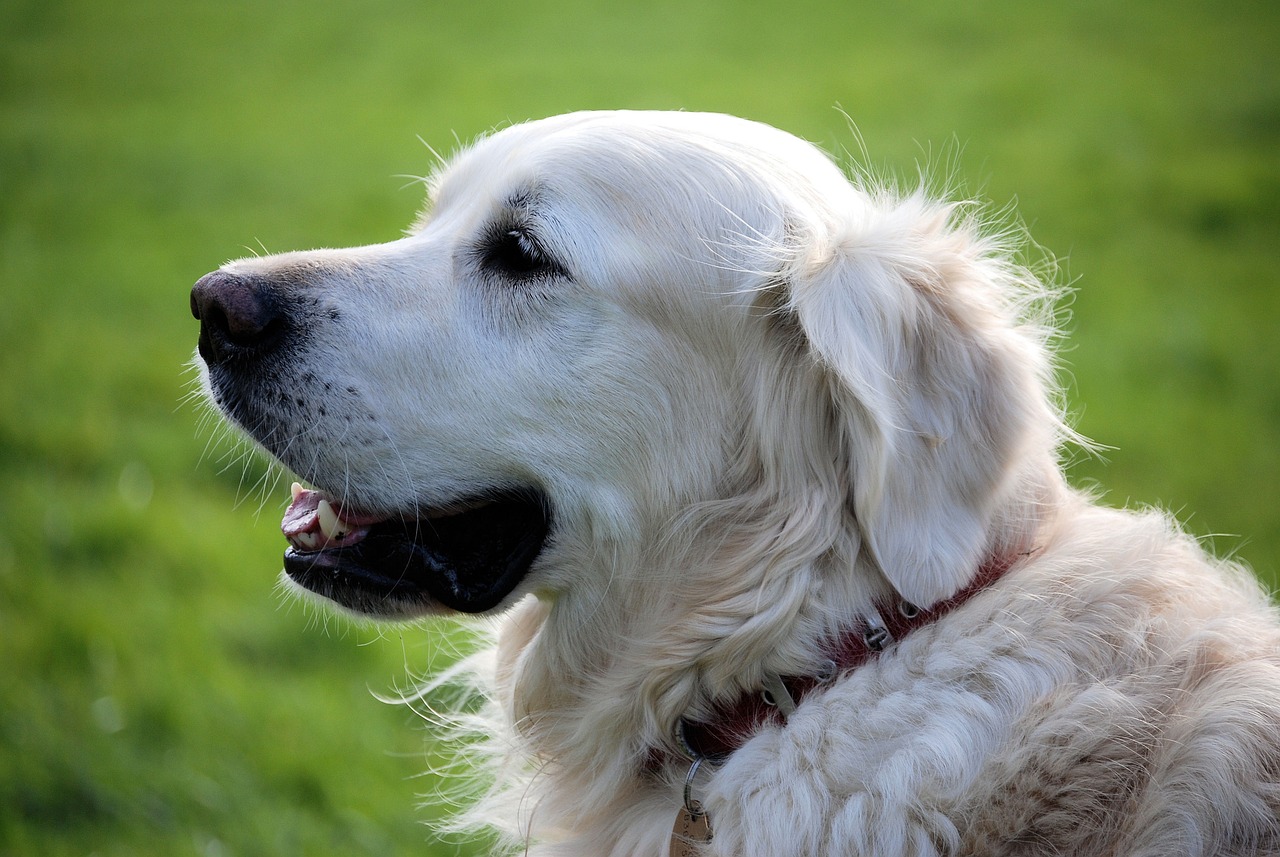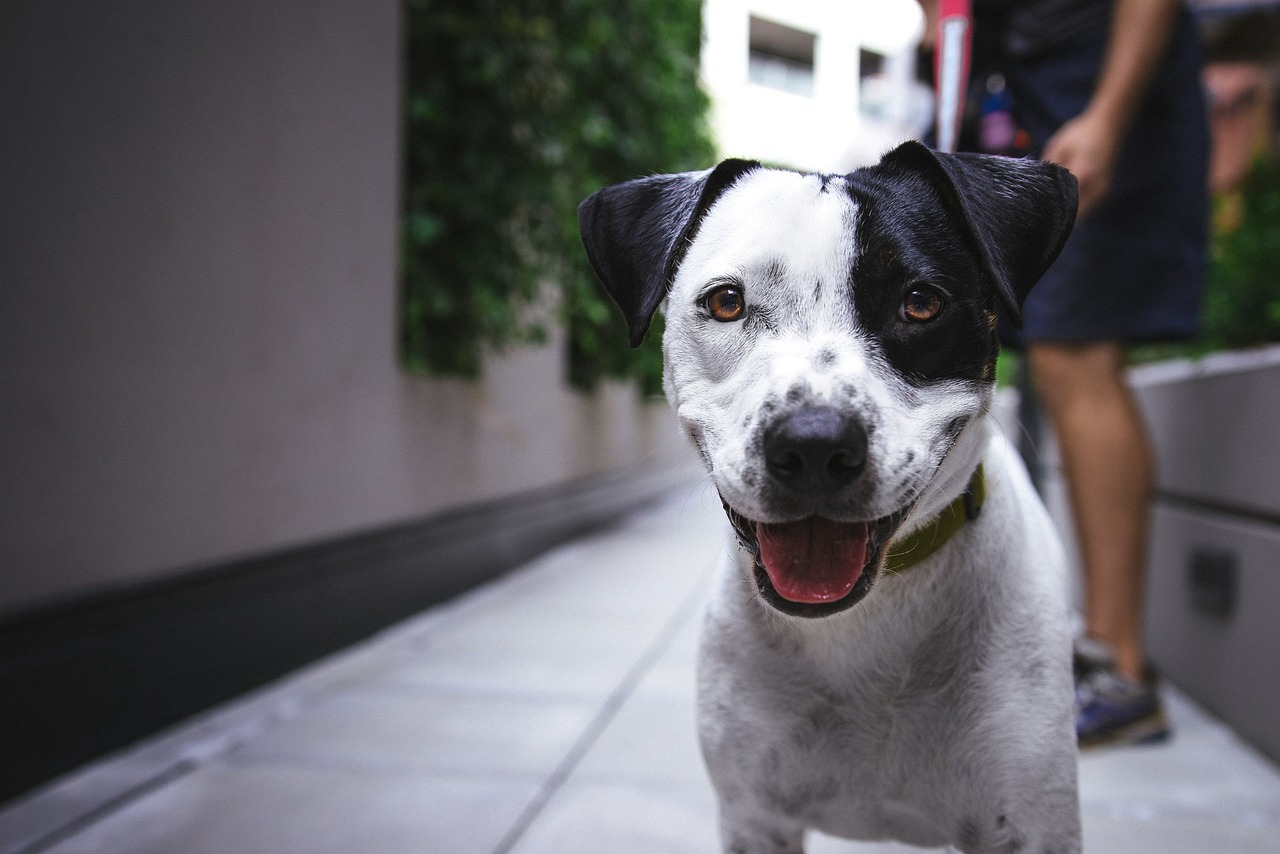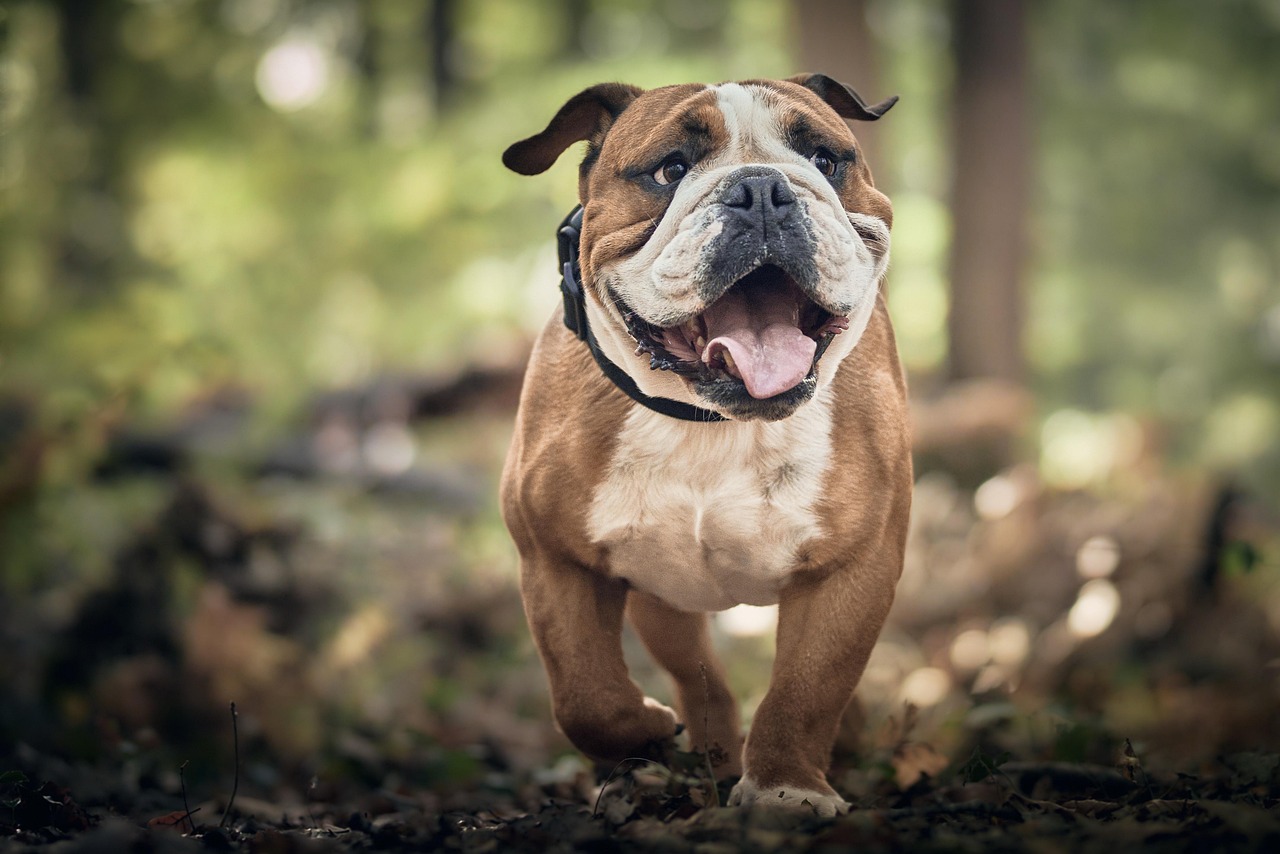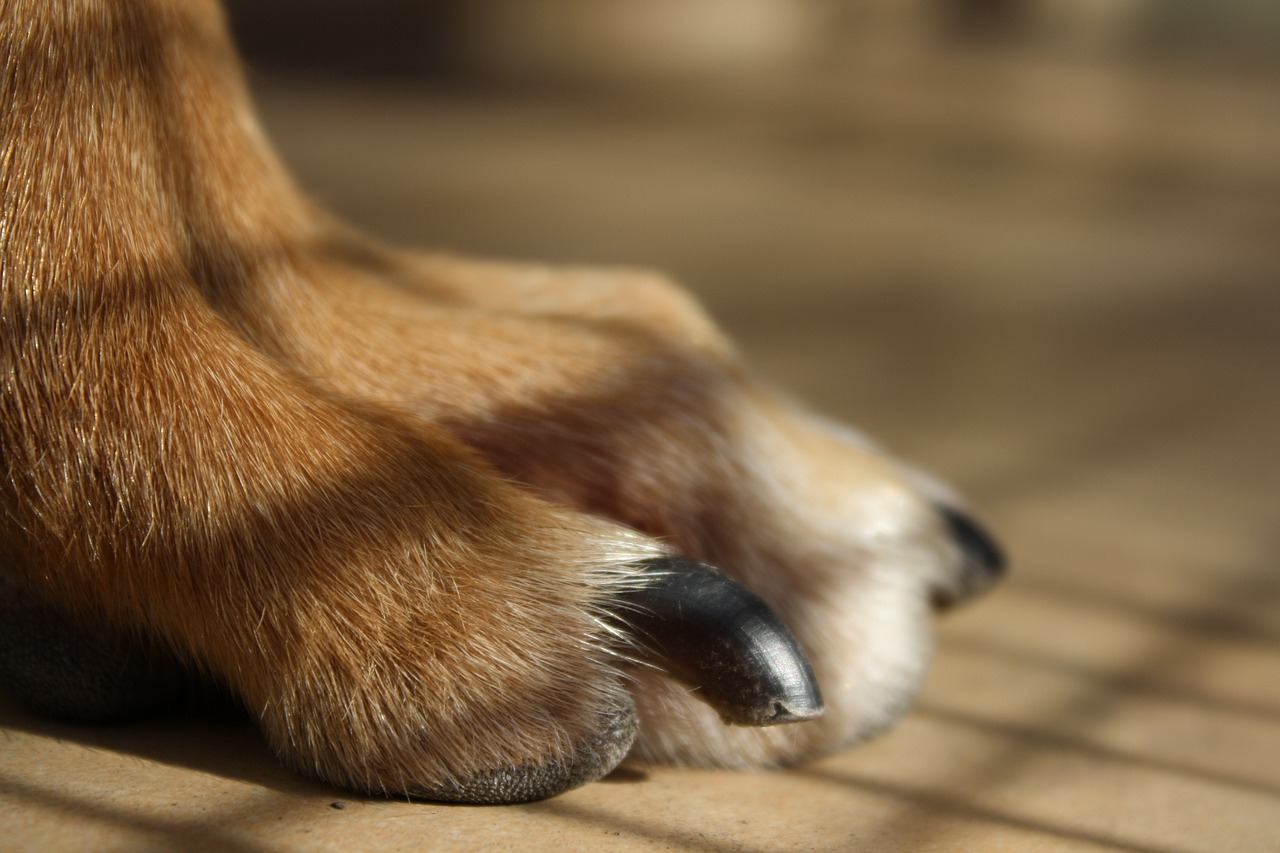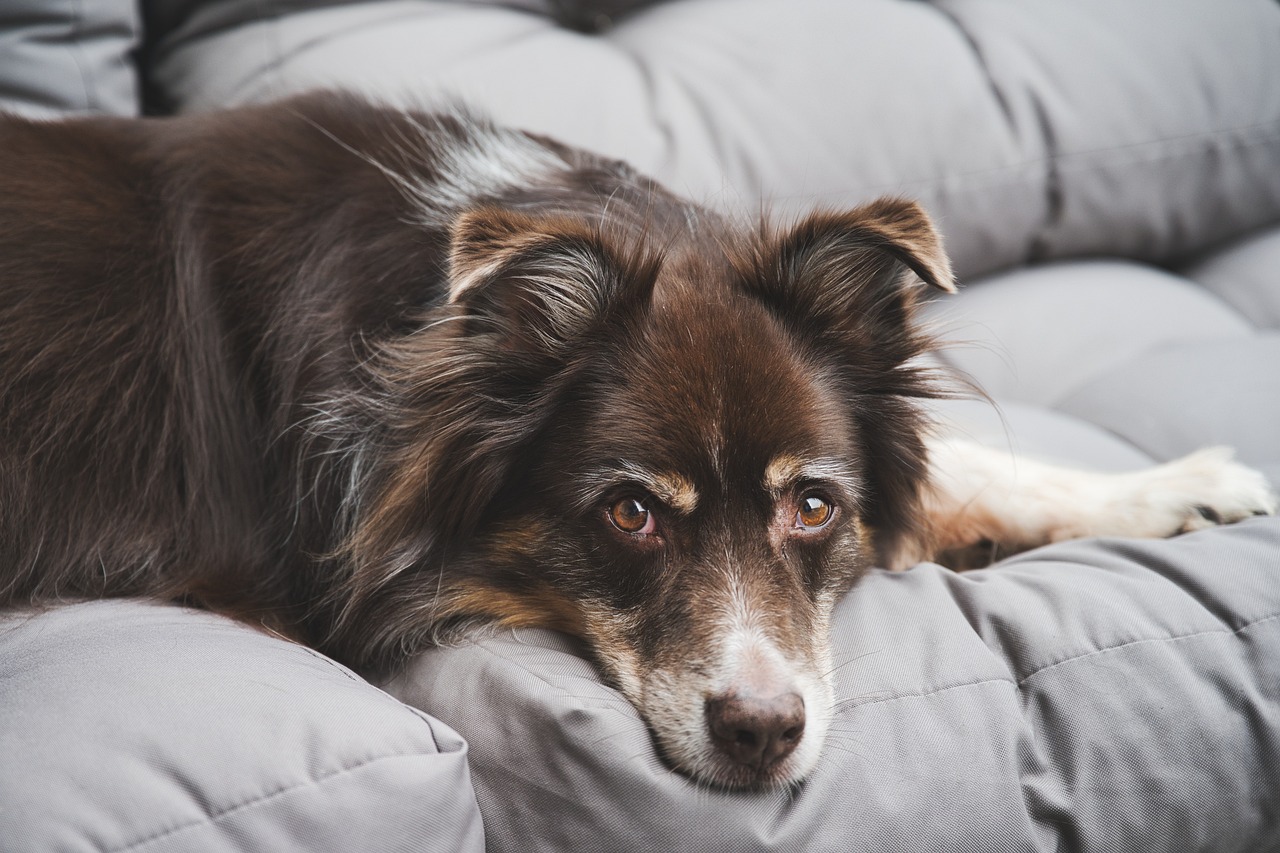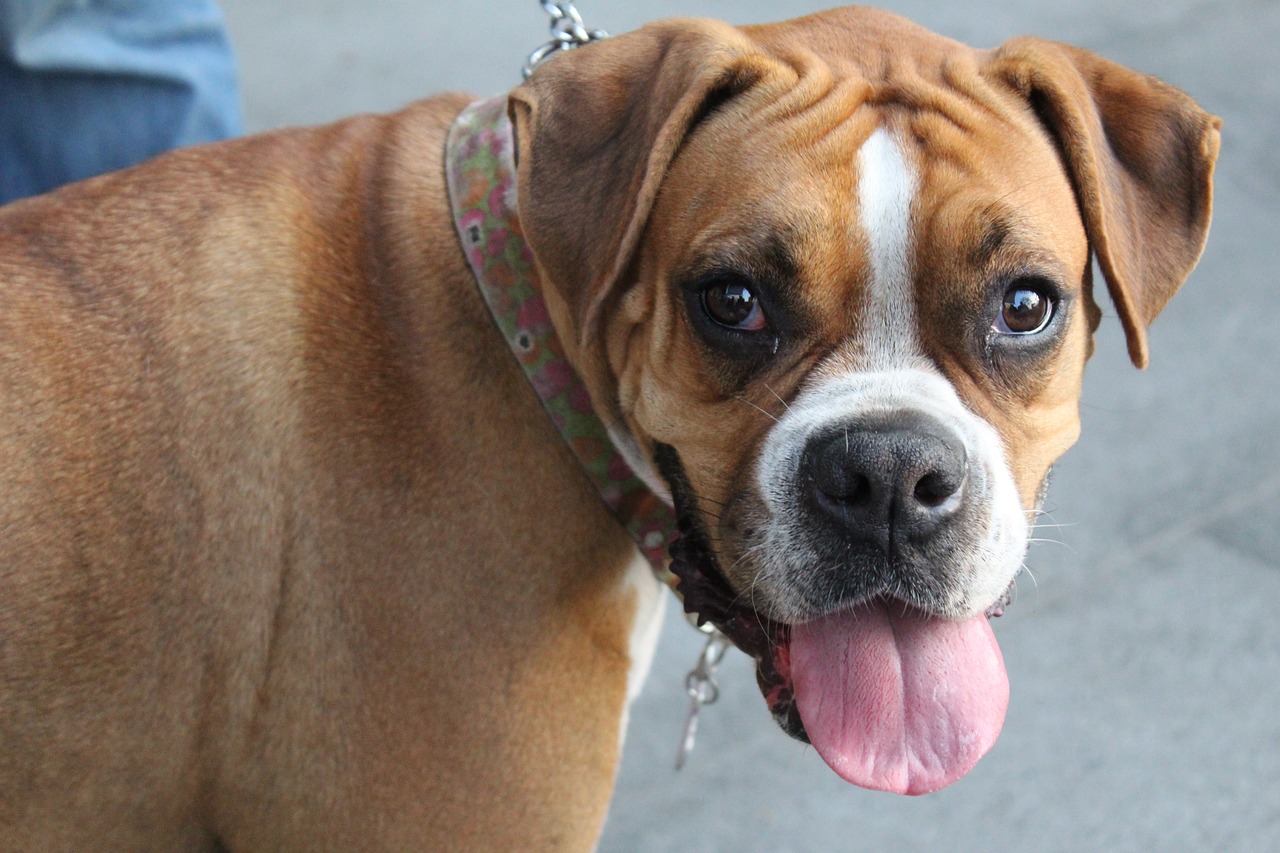This article provides a comprehensive guide on how to effectively care for dog bite wounds, including cleaning, dressing, and when to seek professional medical help.
Understanding Dog Bites
Dog bites can vary significantly in severity, from minor scratches to deep, severe wounds. It’s essential to assess the nature of the bite to determine the appropriate course of action. Understanding the type of injury can help prevent complications and promote quicker healing.
Immediate First Aid Steps
Taking immediate action after a dog bite is crucial. Here are the first steps to minimize injury and prevent infection:
- Stay calm and assess the situation.
- Control any bleeding by applying gentle pressure with a clean cloth.
- Clean the wound as soon as possible.
Assessing the Severity of the Bite
Evaluating the severity of the bite is essential for effective treatment:
- Minor Bites: Superficial wounds that may only require basic cleaning and dressing.
- Major Bites: Deep wounds that may need professional medical evaluation.
Cleaning the Wound
Proper cleaning is vital to prevent infection. Follow these steps:
- Rinse the wound under lukewarm water.
- Use mild soap to cleanse the area.
- Pat dry with a clean towel.
Dressing the Wound
After cleaning, dressing the wound correctly is crucial. Here are some tips:
- Choosing the Right Dressing: Use sterile gauze or adhesive bandages suitable for the wound size.
- Securing the Dressing: Ensure the dressing is snug but not too tight to avoid restricting blood flow.
When to Seek Medical Attention
Sometimes, professional medical care is necessary. Look for these signs:
- Severe bleeding that doesn’t stop.
- Signs of infection, such as increased redness or pus.
- Uncertainty about the dog’s rabies vaccination status.
Aftercare and Monitoring
Post-treatment care is vital for proper healing. Here are some aftercare tips:
- Change the dressing daily or as needed.
- Monitor for signs of infection or complications.
Conclusion: Staying Safe Around Dogs
Understanding dog behavior and practicing safety measures can significantly reduce the risk of bites. Education and awareness play a crucial role in preventing such incidents.

Understanding Dog Bites
Dog bites can be a serious concern for pet owners and the general public alike. They can result in a range of injuries, from minor scratches that may require little more than cleaning, to severe wounds that necessitate immediate medical attention. It is essential to understand the nature and severity of a dog bite to ensure effective treatment and to prevent complications that could arise.
When assessing a dog bite, one must consider various factors, including the depth of the wound, the amount of bleeding, and the potential for infection. Minor bites may simply break the skin, while more serious bites can penetrate deeper tissues, causing significant damage. Understanding these differences can help individuals determine whether they need to seek professional medical care or if they can manage the injury at home.
Furthermore, being aware of the signs of infection is crucial. Symptoms such as redness, swelling, and the presence of discharge can indicate that the wound is not healing properly and may require medical intervention. Prompt action can be the difference between a simple recovery and a complicated healing process.
In summary, recognizing the severity of a dog bite is vital for effective treatment. By understanding the different types of bites and their potential consequences, individuals can take the necessary steps to ensure proper care and minimize the risk of complications. Always remember that when in doubt, it is best to consult a healthcare professional.

Immediate First Aid Steps
Immediate action following a dog bite is crucial to minimize injury and prevent infection. Knowing the right steps to take can significantly impact the healing process and overall recovery. This section outlines the essential first aid steps you should follow right after a dog bite incident.
- Stay Calm: It is important to remain calm to assess the situation effectively.
- Ensure Safety: First, ensure your safety and that of others. If the dog is still present and poses a threat, move to a secure location.
- Assess the Wound: Check the severity of the bite. Look for bleeding, the depth of the wound, and any signs of tissue damage.
- Control Bleeding: If the wound is bleeding heavily, apply gentle pressure with a clean cloth or bandage until the bleeding stops.
- Clean the Wound: Rinse the wound under lukewarm running water for at least 5-10 minutes. Use mild soap to gently clean the area around the bite.
- Apply an Antiseptic: After cleaning, apply an antiseptic solution to help prevent infection.
- Cover the Wound: Use a sterile bandage or dressing to cover the wound. This protects it from dirt and bacteria.
- Monitor for Signs of Infection: Keep an eye on the wound for redness, swelling, or pus. If these occur, seek medical attention.
- Seek Medical Help: If the bite is deep, bleeding does not stop, or signs of infection appear, consult a healthcare professional immediately.
Remember: Taking swift and appropriate action can greatly reduce the risk of complications from a dog bite. Always prioritize your safety and the well-being of others in the vicinity.
Assessing the Severity of the Bite
is a critical step in determining the appropriate course of treatment after a dog bite incident. Understanding the extent of the injury ensures that one can provide the necessary care and seek professional help if needed.
When evaluating a dog bite, there are several key factors to consider:
- Bleeding: Assess the amount of blood. Minor bites may only cause slight bleeding, while severe bites can lead to heavy blood loss. If the bleeding is profuse, it is essential to apply pressure and seek medical attention immediately.
- Depth of the Wound: Examine how deep the bite has penetrated the skin. Superficial wounds may only affect the outer layer, while deeper wounds can damage muscles, nerves, or even bones, necessitating urgent care.
- Signs of Infection: Look for early indicators of infection such as redness, swelling, warmth, or pus. These symptoms can develop within a few days and may require antibiotics or further medical intervention.
It is also important to differentiate between minor and major bites. Minor bites can often be treated at home with proper cleaning and dressing, while major bites may require stitches, tetanus shots, or other medical treatments.
Additionally, be vigilant for complications that may arise post-bite. If you notice increased pain, persistent swelling, or fever, it is crucial to consult a healthcare provider promptly.
In conclusion, thorough assessment of a dog bite’s severity is vital for effective treatment. By being aware of the signs and symptoms, one can take appropriate action to ensure proper healing and prevent complications.
Minor vs. Major Bites
Understanding the difference between minor and major dog bites is crucial for effective treatment and ensuring the best outcome for the injured party. Dog bites can vary significantly in severity, and recognizing whether a bite is minor or major can guide decisions on whether to seek professional medical care or manage the injury at home.
Minor bites typically involve superficial wounds, such as small punctures or scratches that do not penetrate deeply into the skin. These bites may cause some bleeding or swelling but generally do not pose a significant risk of infection or long-term complications. Home treatment, such as cleaning the wound with soap and water, applying an antiseptic, and covering it with a bandage, is often sufficient. It is essential to monitor the wound for any signs of infection, such as increased redness, warmth, or discharge.
On the other hand, major bites can involve deeper punctures, lacerations, or bites that penetrate muscle or bone. These injuries may cause significant bleeding and are at a higher risk for complications, including infections and nerve damage. If a bite is deep, does not stop bleeding, or shows signs of severe swelling or infection, it is vital to seek professional medical care immediately. A healthcare provider may need to clean the wound more thoroughly, prescribe antibiotics, or administer a tetanus shot, depending on the situation.
In summary, differentiating between minor and major bites is essential for determining the appropriate course of action. While minor bites can often be treated at home, major bites require prompt medical attention to prevent serious complications. Always err on the side of caution and consult a healthcare professional if there is any uncertainty about the severity of a dog bite.
Signs of Infection
When caring for a dog bite wound, it is crucial to monitor for early signs of infection. Recognizing these signs can significantly impact recovery and may necessitate timely medical intervention. Here are some key indicators to watch for:
- Redness: A slight amount of redness around the wound is normal, but if the area becomes increasingly red or the redness spreads, it may indicate an infection.
- Swelling: Some swelling can occur after a bite, but excessive swelling, especially if it is accompanied by pain, may suggest an infection.
- Discharge: Any discharge from the wound, particularly if it is yellow, green, or foul-smelling, is a concerning sign that infection may be present.
- Increased Pain: While some pain is expected, an increase in pain intensity or new pain that develops after the initial injury can be a sign of infection.
- Fever: A fever may occur as the body responds to an infection. If you experience a fever following a dog bite, seek medical assistance promptly.
In addition to these signs, it is essential to monitor the wound for any delayed healing. If the wound does not show improvement within a few days, or if it seems to worsen, it is advisable to consult a healthcare professional.
Taking these signs seriously can help prevent complications and ensure a smoother recovery process. Remember, early detection is key to managing infections effectively.
Cleaning the Wound
Cleaning a dog bite wound is a crucial step in ensuring proper healing and preventing infection. Following the right procedures can significantly reduce the risk of complications. Below are detailed steps on how to effectively clean a dog bite wound.
- Gather Necessary Supplies: Before you start, make sure you have the following items on hand: clean water, mild soap, sterile gauze or cloth, antiseptic solution, and adhesive bandages.
- Wash Your Hands: Always begin by thoroughly washing your hands with soap and water to prevent introducing bacteria into the wound.
- Rinse the Wound: Gently rinse the bite area under lukewarm running water for at least 5-10 minutes. This helps to remove dirt, debris, and saliva from the wound.
- Clean with Mild Soap: Use a mild soap to clean around the wound. Avoid getting soap directly into the wound as it can cause irritation.
- Pat Dry: After rinsing and cleaning, carefully pat the wound dry with a sterile gauze or cloth. Do not rub, as this can aggravate the injury.
- Apply Antiseptic: Once the area is dry, apply an antiseptic solution to help prevent infection. Ensure that the solution is suitable for skin use.
- Dress the Wound: Cover the cleaned wound with a sterile bandage or gauze. This will protect it from further injury and contamination.
- Monitor the Wound: Keep an eye on the wound for any signs of infection, such as increased redness, swelling, or discharge. If any of these symptoms occur, seek medical attention.
In conclusion, proper cleaning of a dog bite wound is essential for effective healing. By following these steps, you can minimize the risk of infection and ensure a better recovery process. Always consult a healthcare professional if you have any concerns regarding the severity of the bite or infection signs.

Dressing the Wound
After properly cleaning a dog bite wound, the next critical step is . This process is essential not only for protecting the wound but also for promoting healing. An appropriate dressing can create a barrier against bacteria and other contaminants, significantly reducing the risk of infection.
When it comes to dressing a dog bite, there are several factors to consider:
- Type of Wound: Assess whether the wound is a minor scratch or a deeper laceration. This will help determine the type of dressing needed.
- Materials: Use sterile materials such as gauze pads, adhesive bandages, or non-stick dressings. These materials are designed to absorb any exudate and protect the wound from external irritants.
- Size of the Wound: Ensure the dressing is large enough to cover the entire wound area, extending beyond the edges to provide adequate protection.
To secure the dressing effectively, follow these steps:
1. Place the sterile dressing directly over the cleaned wound.2. Use medical tape or a bandage to hold the dressing in place.3. Ensure it's snug but not too tight to avoid cutting off circulation.4. Change the dressing daily or if it becomes wet or dirty.
It’s also important to monitor the wound for any signs of infection, such as increased redness, swelling, or discharge. If any of these symptoms appear, seek medical attention promptly.
In conclusion, properly dressing a dog bite wound is vital for effective healing and infection prevention. By choosing the right materials and methods, you can significantly aid the recovery process.
Choosing the Right Dressing
for a dog bite wound is a critical step in the healing process. The type of dressing you select can significantly influence not only the rate of healing but also the risk of infection. Understanding the various options available will help you make an informed decision.
There are several types of dressings suitable for dog bite wounds:
- Adhesive Bandages: These are ideal for minor wounds. They are easy to apply and provide a barrier against dirt and bacteria.
- Gauze Pads: For deeper wounds, gauze pads are often recommended. They are absorbent and can be used to control bleeding while allowing airflow.
- Sterile Wraps: These are essential for larger wounds. Sterile wraps help keep the area clean and protected from external contaminants.
When selecting a dressing, consider the following factors:
- Wound Size: Larger wounds may require more extensive coverage, while smaller ones can be managed with adhesive bandages.
- Location of the Wound: Areas that experience more movement may need a more secure dressing to stay in place.
- Moisture Control: Some dressings are designed to absorb excess moisture, which is vital for preventing infection.
After choosing the appropriate dressing, it is equally important to secure it properly. This ensures that the dressing remains in place and continues to protect the wound effectively. Use medical tape or a bandage to keep the dressing secure, but be cautious not to wrap it too tightly, as this can restrict blood flow.
In conclusion, the right dressing can make a significant difference in the healing of a dog bite wound. By understanding the available options and how to apply them correctly, you can help facilitate a smoother recovery process.
How to Secure the Dressing
When caring for a dog bite wound, securing the dressing is a critical step that should not be overlooked. Properly securing the dressing ensures that it remains in place, which is essential for protecting the wound from further injury or contamination. An unsecured dressing can lead to exposure to dirt and bacteria, increasing the risk of infection.
To effectively secure the dressing, follow these essential steps:
- Choose the Right Dressing: Select a dressing that is appropriate for the size and type of wound. Adhesive bandages, gauze pads, and sterile wraps are commonly used.
- Clean the Area: Before applying the dressing, ensure that the area around the wound is clean and dry to promote better adhesion.
- Apply the Dressing: Place the dressing over the wound gently. Make sure it covers the entire area to prevent exposure.
- Secure the Edges: If using gauze or non-adhesive dressings, use medical tape or adhesive strips to secure the edges. Ensure that the tape is not too tight, as this can restrict circulation.
- Check for Comfort: After securing the dressing, check to ensure that it is comfortable and not causing any pain or discomfort. Adjust as necessary.
Additionally, it is important to monitor the dressing regularly. If it becomes wet, dirty, or loose, replace it immediately. Keeping the dressing clean and secure not only aids in the healing process but also minimizes the risk of complications.
In conclusion, taking the time to properly secure the dressing is a vital part of dog bite wound care. By following these steps, you can help protect the wound and promote a quicker recovery.

When to Seek Medical Attention
Dog bites can lead to serious health issues, and it is essential to recognize when professional medical care is necessary. While some bites may seem minor, others can pose significant risks if not treated properly. This section outlines key signs that indicate the need for a healthcare provider.
- Deep Wounds: If the bite penetrates deeply into the skin and underlying tissues, it is crucial to seek medical attention. Deep wounds can damage muscles, nerves, or blood vessels, leading to complications.
- Excessive Bleeding: If the wound is bleeding profusely and does not stop after applying pressure for several minutes, it is essential to visit a healthcare professional.
- Signs of Infection: Monitor the wound for signs of infection, including increased redness, swelling, warmth, or pus. If these symptoms develop, medical care is necessary.
- Rabies Risk: If the dog that bit you is unvaccinated or its vaccination status is unknown, it is vital to consult a doctor about the potential risk of rabies and whether post-exposure prophylaxis is needed.
- Tetanus Considerations: If your tetanus vaccination is not up-to-date, especially after a severe bite, you may need a booster shot. Consult your healthcare provider for advice.
- Allergic Reactions: If you experience symptoms such as difficulty breathing, swelling of the face or throat, or hives after a dog bite, seek emergency medical attention immediately.
In summary, recognizing the signs that require professional medical attention can make a significant difference in treatment outcomes. If you are ever in doubt, it is always better to err on the side of caution and consult a healthcare provider.
Risk of Rabies
Understanding the risk of rabies transmission from dog bites is crucial for anyone who has been bitten by a dog, particularly when the dog’s vaccination status is uncertain. Rabies is a viral disease that poses a significant threat to both humans and animals, and it is almost always fatal once symptoms appear. Therefore, recognizing the potential for rabies transmission is essential for timely and effective intervention.
When a dog bite occurs, the first step is to assess the situation. If the dog is known to be vaccinated against rabies, the risk is considerably lower. However, if the vaccination status of the dog is unknown or if the dog is acting strangely, the risk increases significantly. In such cases, it is vital to seek medical attention promptly.
The rabies virus is typically transmitted through the saliva of an infected animal via a bite. The incubation period can vary, with symptoms appearing anywhere from a few weeks to several months after exposure. Early symptoms may include fever, headache, and general weakness, which can escalate to more severe neurological symptoms. Therefore, immediate medical evaluation is essential if bitten.
Healthcare providers may recommend a rabies post-exposure prophylaxis (PEP) treatment, which involves a series of rabies vaccinations to prevent the virus from taking hold in the body. This treatment is most effective when administered as soon as possible after the bite.
In addition to rabies, dog bites can lead to other complications, such as infection or the need for a tetanus shot, depending on the severity of the wound. It is important to monitor the bite site for any signs of infection, including redness, swelling, or discharge, and to follow up with a healthcare professional as needed.
In conclusion, understanding the risk of rabies from dog bites is vital for ensuring safety and health. Always err on the side of caution, especially when the dog’s vaccination status is unknown. Seeking prompt medical care can make all the difference in preventing serious health issues.
Possible Need for Tetanus Shot
After experiencing a dog bite, it is crucial to assess not only the wound itself but also the potential need for a tetanus shot. Tetanus is a serious bacterial infection that affects the nervous system and can lead to severe complications. The necessity of a tetanus vaccination largely depends on two factors: the severity of the bite and the individual’s vaccination history.
In cases of minor bites, where the skin is only slightly broken, the risk of tetanus may be lower, especially if the person is up-to-date with their vaccinations. However, for major bites, which may involve deeper punctures or lacerations, the risk increases significantly. If the bite occurs in a dirty or contaminated environment, the likelihood of needing a tetanus shot also rises.
Vaccination History also plays a critical role in determining the need for a tetanus booster. Generally, it is recommended that individuals receive a tetanus shot every 10 years. However, if the last vaccination was more than five years ago and the bite is severe, a booster may be required sooner. It is essential to keep track of vaccination records to ensure timely updates.
Consulting a healthcare professional is advisable if there is any uncertainty regarding the need for a tetanus shot. They can provide guidance based on the specifics of the bite and the individual’s health history. In summary, while not every dog bite will necessitate a tetanus shot, understanding the factors involved can help ensure proper care and prevent serious complications.
In conclusion, recognizing the importance of a tetanus shot after a dog bite is vital for maintaining health and safety. Always seek professional medical advice to make informed decisions regarding vaccinations and wound care.
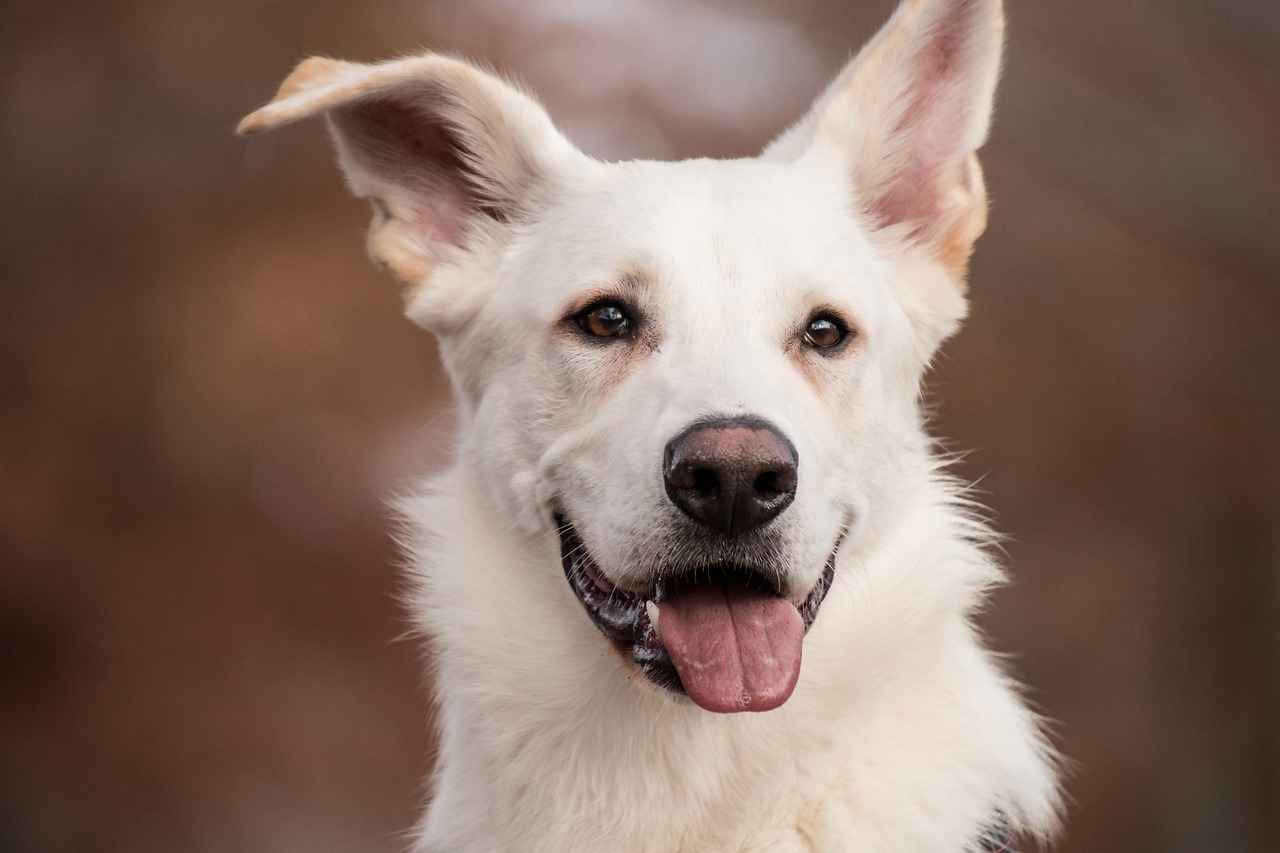
Aftercare and Monitoring
is a crucial aspect of healing following a dog bite. Proper attention to the wound can significantly reduce the risk of complications and promote faster recovery. This section will guide you through the essential steps for effective post-treatment care.
Once the initial treatment has been administered, it is vital to monitor the wound daily. Regular assessment allows for early detection of any issues, ensuring that the healing process remains on track. Here are some key points to consider:
- Daily Care Routine: Establish a routine that includes cleaning the wound gently with mild soap and water. Pat the area dry with a clean cloth before applying a fresh dressing.
- Changing Dressings: Dressings should be changed at least once a day or more frequently if they become wet or dirty. Always wash your hands before and after handling the wound to prevent infection.
- Signs of Infection: Be vigilant for symptoms such as increased redness, swelling, warmth, or discharge from the wound. If any of these signs occur, seek medical attention promptly.
- Monitoring Pain Levels: It is normal for some pain to occur, but if the pain worsens or becomes severe, consult with a healthcare professional.
- Follow-Up Appointments: Schedule follow-up visits with your healthcare provider to ensure the wound is healing properly and to address any concerns.
Being proactive in your aftercare can make a significant difference in the healing process. Remember, if you notice any unusual changes or have concerns about the wound, do not hesitate to contact a medical professional for advice.
In conclusion, effective aftercare is essential for proper healing of dog bite wounds. By monitoring the wound closely and following a structured care routine, you can help ensure a swift recovery and reduce the risk of complications.
Daily Care Routine
Establishing a for a dog bite wound is essential to ensure proper healing and minimize the risk of infection. A consistent regimen not only keeps the wound clean but also allows for early detection of any potential complications. Here are some key aspects to consider when developing your daily care routine:
- Clean the Wound Daily: Gently wash the wound with mild soap and water. This helps remove any dirt or bacteria that may have accumulated. Pat the area dry with a clean towel to avoid irritation.
- Apply Antiseptic: After cleaning, apply an antiseptic solution or ointment to the wound. This step is crucial as it further protects against infection.
- Dress the Wound: Use a sterile dressing or bandage to cover the wound. Make sure the dressing is not too tight, allowing for proper circulation while protecting the area from external contaminants.
- Change Dressings Regularly: Replace the dressing at least once a day, or more frequently if it becomes wet or dirty. This ensures the wound remains clean and reduces the chance of infection.
- Monitor for Signs of Infection: Daily checks for redness, swelling, or unusual discharge are vital. If any of these symptoms occur, seek medical attention promptly.
- Keep the Area Dry: Moisture can promote bacterial growth, so ensure the area around the wound stays dry, especially after cleaning.
- Consult a Veterinarian: If the wound does not show signs of improvement or worsens, consult a veterinarian for further evaluation and treatment.
By following these steps, you can significantly enhance the healing process and ensure your pet’s well-being. Remember, a well-maintained wound care routine is your first line of defense against infection and complications.
Recognizing Complications
When dealing with dog bite wounds, it is essential to be vigilant about potential complications that may arise during the healing process. Delayed healing and increased pain are two significant issues that may indicate an underlying problem. Understanding these complications can lead to timely intervention, which is crucial for effective recovery.
One of the first signs to monitor is the healing timeline. Typically, minor wounds should show signs of improvement within a few days. If the wound appears to be worsening or not healing at all, this could signify an infection or other complications. Increased pain at the site of the wound, especially if it intensifies over time, should not be ignored. Pain that escalates can indicate inflammation or infection, necessitating a visit to a healthcare provider.
Moreover, swelling and redness around the wound are common signs of infection. If these symptoms persist or worsen, it is crucial to seek medical advice. Foul-smelling discharge from the wound can also be a red flag, suggesting that bacteria are present and the wound may require professional cleaning and treatment.
Additionally, fever or general malaise can accompany more severe infections. If a person experiences these symptoms following a dog bite, it is imperative to consult a healthcare professional as soon as possible. Early intervention can prevent more serious health issues and ensure a smoother recovery.
In conclusion, being proactive and aware of these potential complications can make a significant difference in the outcome of dog bite care. By monitoring the wound closely and seeking timely medical intervention when necessary, individuals can enhance their chances of a full recovery.

Conclusion: Staying Safe Around Dogs
Understanding dog behavior is crucial for preventing bites and ensuring a safe environment for both humans and dogs. Dogs are social animals, but their reactions can vary significantly based on their experiences, training, and the situation they find themselves in. By educating ourselves about the signs of discomfort or aggression in dogs, we can better interpret their behavior and respond appropriately.
- Recognizing Body Language: Dogs communicate through body language. Signs such as growling, baring teeth, or a stiffened body posture can indicate that a dog feels threatened or uncomfortable.
- Understanding Triggers: Many bites occur when a dog is startled or feels cornered. Understanding what triggers a dog’s fear or aggression can help prevent dangerous encounters.
- Socialization and Training: Proper socialization and training can significantly reduce the likelihood of aggressive behavior. Dogs that are accustomed to various environments, people, and other animals are generally more relaxed and less likely to bite.
Practicing safety around dogs is equally important. Here are some essential tips:
- Always Ask Before Petting: Not all dogs are friendly or comfortable with strangers. Always ask the owner for permission before approaching a dog.
- Do Not Disturb Dogs While Eating: Dogs can be protective of their food. It’s best to leave them alone while they are eating or chewing on a toy.
- Teach Children How to Interact with Dogs: Educating children on how to behave around dogs can prevent accidents. Teach them to approach calmly and to avoid sudden movements.
In conclusion, education and awareness play a vital role in dog bite prevention. By understanding dog behavior and practicing safety measures, we can significantly reduce the risk of dog bites and create a more harmonious relationship between dogs and humans.
Frequently Asked Questions
- What should I do immediately after a dog bite?
First, stay calm! Assess the bite’s severity. If it’s bleeding, apply gentle pressure with a clean cloth. Clean the wound with soap and water, and if possible, apply an antiseptic. Always remember, your health is priority number one!
- How can I tell if a dog bite is serious?
Look for signs like deep wounds, excessive bleeding, or if the bite is on a sensitive area. If you notice swelling, redness, or discharge, it could indicate an infection. When in doubt, it’s best to consult a healthcare professional!
- When should I seek medical attention for a dog bite?
If the bite is deep, won’t stop bleeding, or shows signs of infection, don’t hesitate to see a doctor. Also, if the dog’s vaccination status is unknown, it’s crucial to get checked for rabies and possibly a tetanus shot.
- How do I properly dress a dog bite wound?
After cleaning the wound, use sterile gauze or adhesive bandages to cover it. Make sure it’s secure but not too tight! Changing the dressing regularly is key to preventing infection and ensuring proper healing.
- What are the signs of infection I should watch for?
Be on the lookout for increased redness, swelling, warmth, or pus. If the wound starts to hurt more than expected or if you develop a fever, seek medical help right away!
